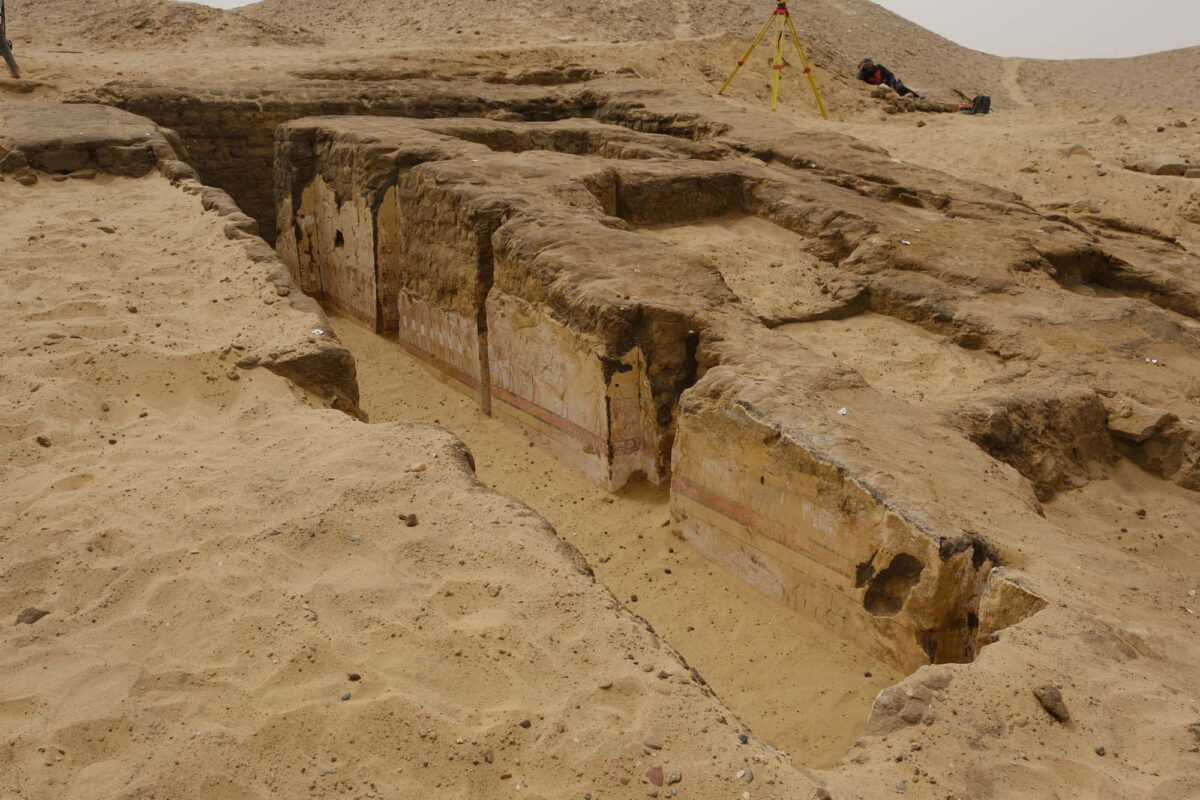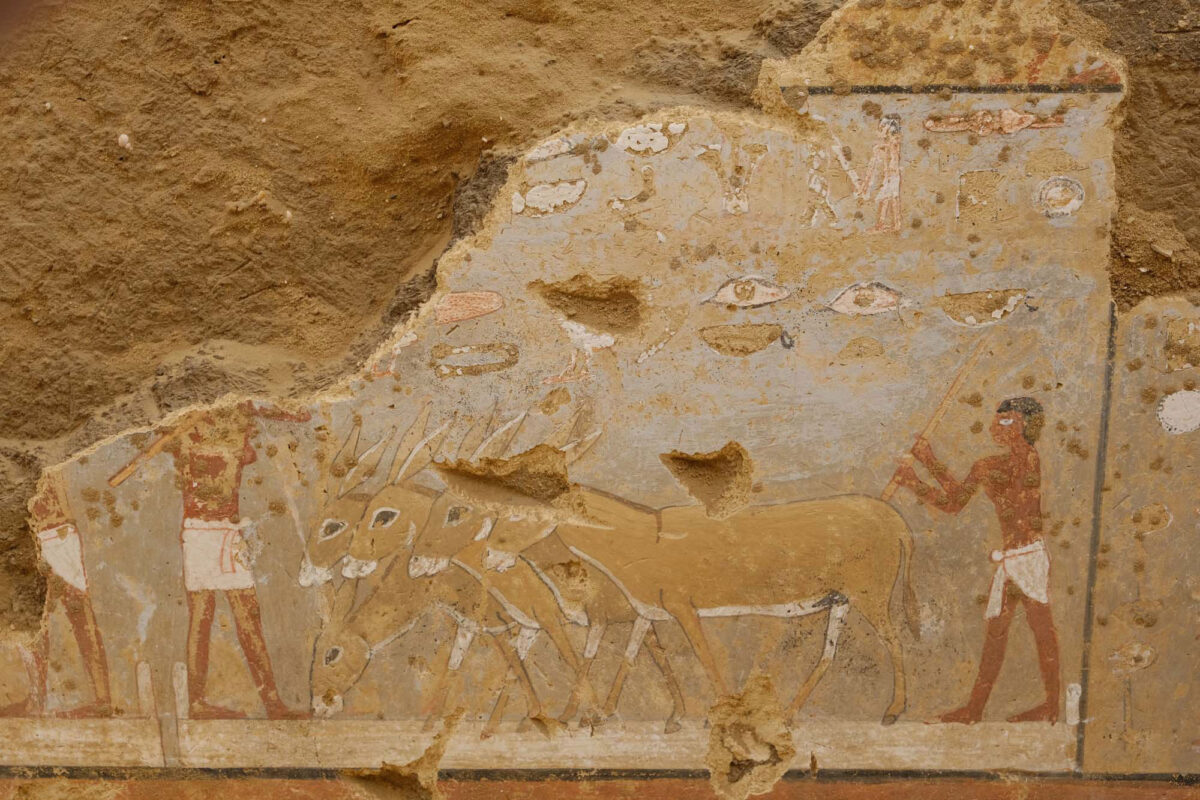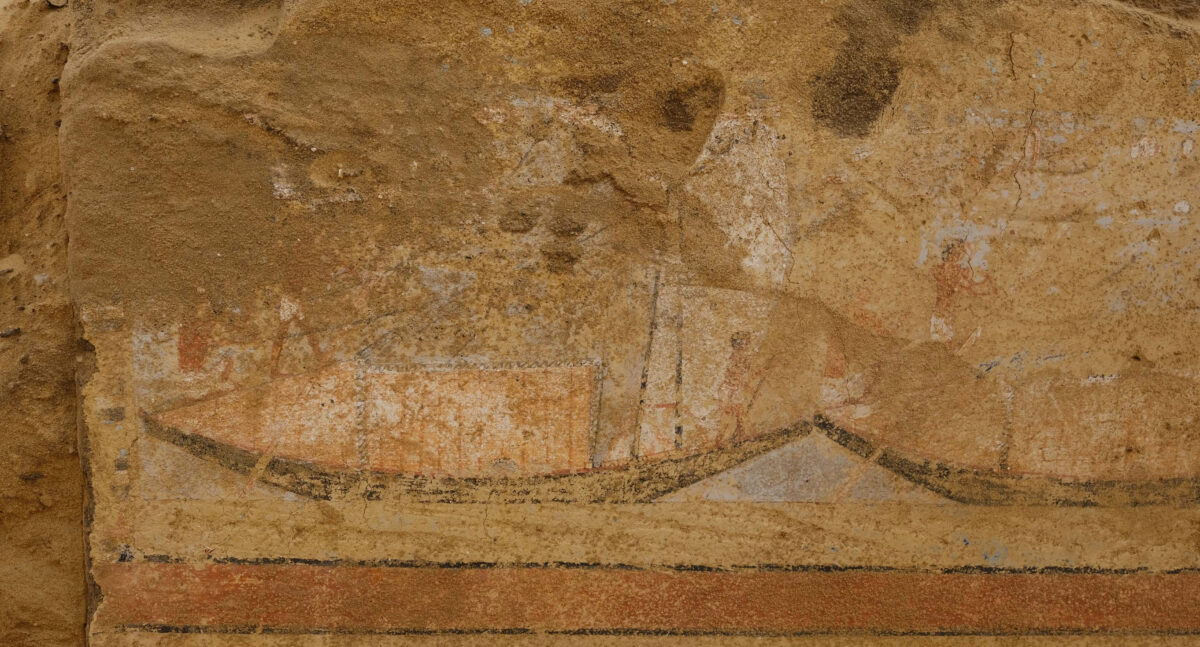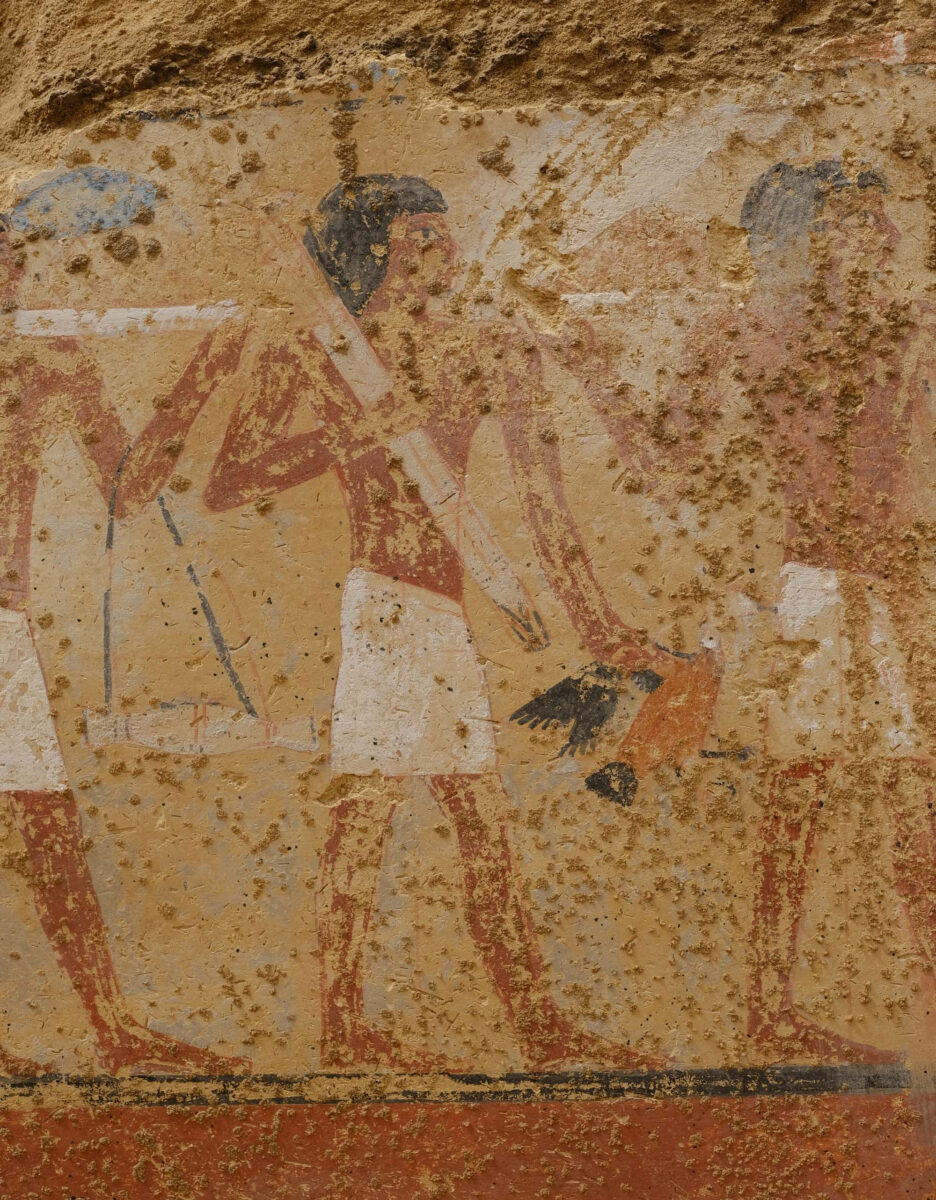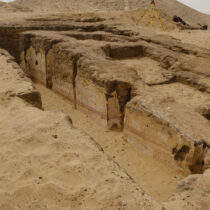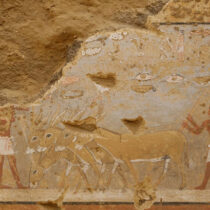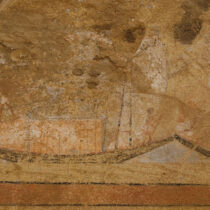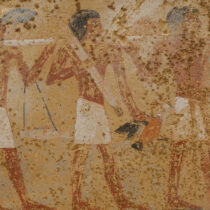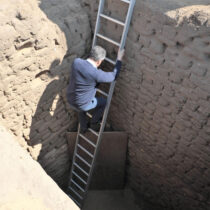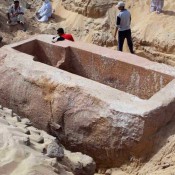The newly discovered, richly decorated mastaba tomb dates from the late 5th or early 6th dynasty (ca. 2300 BC) and comprises seven burial shafts and a cult chamber. Despite massive destruction in places, many of the rare images have been preserved. The tomb is part of an extensive cemetery in Dahshur, south of Saqqara, which has been investigated by the DAI Cairo since 2002.
According to the inscriptions on a massive false door made of limestone, the newly discovered tomb belonged to a man named Seneb-nebef, who held various offices in the administration of the inhabitants of the palace district (Chentiu-she), as well as to his wife Idut, a priestess of Hathor, the mistress of (the sanctuary of the) Sycamore. Judging by the shape, inscriptions and images, but also by the characteristic pottery of a ritual deposit found in the mastaba, the tomb dates from the end of the 5th or the beginning of the 6th dynasty (ca. 2300 BC).
The mastaba (i.e. bench) tomb consists of an approx. 8 x 12 metre building block made of unfired mud bricks. A long corridor leading to the cult chamber in the south was entered through the entrance in the north of the east façade. The building block itself contains seven burial shafts and a shaft for holding the ceramic bowls and other materials used in the mortuary rituals and perhaps in the context of mummification.
The corridor and cult chamber were decorated with subtle paintings on clay plaster – a rarity in the necropolis of Dahshur. Despite extensive destruction, numerous paintings have been preserved. They show images of the tomb owner and his wife in front of the offering table, scenes from daily life — donkeys on the threshing floor, ships on the Nile, a marketplace — and servants bringing offerings for the funerary cult. In their refined forms and the certainty and elegance of their execution, the paintings offer a valid testimony to the artistic milieu of the capital region of the developed Old Kingdom.
The tomb is part of an extensive cemetery of the inhabitants of the pyramid city of the Red Pyramid, which has been investigated since 2002 by the DAI Cairo in co-operation with the Free University of Berlin and temporarily supported by funds from the German Research Foundation under the direction of Stephan Seidlmayer. The tombs make it possible to trace the existence and history of this settlement community and to profile it in terms of its social differentiation and cultural participation in the overall structure of pharaonic society.
Dahshur, located south of Saqqara, is the southernmost of the great pyramid necropolises of the Old Kingdom in the vicinity of the capital Memphis. The site is characterised by two large pyramids of King Snofru (ca. 2650 BC), the father of King Cheops, the so-called Bent Pyramid and the Red Pyramid.
The DAI Cairo has been involved in various excavation and conservation projects in Dahshur since 1976. After an initial emphasis on the great pyramid complexes of King Snofru and the pyramid of Amenemhet III from the Middle Kingdom (ca. 1840-1800 BC), research at the site has focussed in recent decades on the officials who were active in the context of the necropolis as administrators and priests, and on the settlement communities that existed within the the monumental necropolis.
Other important discoveries from the work of the project in Dahshur were the localisation of the pyramid city of the Red Pyramid, a planned cemetery of palace members from the time of King Amenemhet II (ca. 1880 BC), the harbour and lower causeway of the Bent Pyramid as well as a ritual garden and living areas connected to the Valley Temple of the Bent Pyramid.
The project would like to thank the Egyptian Ministry of Tourism and Antiquities, the Supreme Council of Antiquities and its Permanent Committee as well as the local inspectorate of Dahshur for their permission to carry out this work and their constant support.
